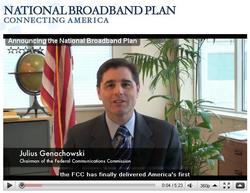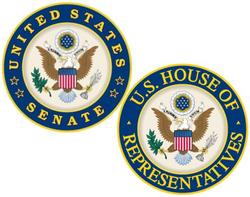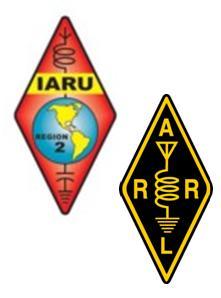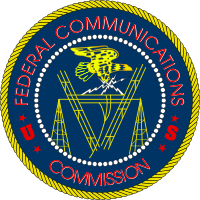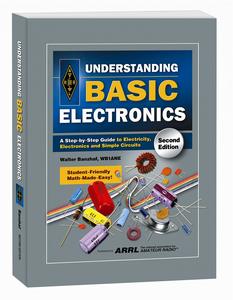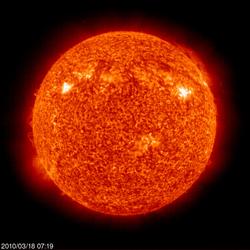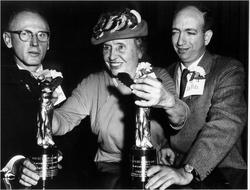 March 18, 2010 John E. Ross, KD8IDJ, Editor
| ||||||||||
FCC News: FCC Releases National Broadband Plan
On Tuesday, March 16, the FCC held an Open Meeting to introduce its report Connecting America: The National Broadband Plan (NBP) that was delivered to Congress that afternoon. Calling it "an ambitious agenda for connecting all corners of the nation while transforming the economy and society with the communications network of the future -- robust, affordable Internet," the Commission found that nearly 100 million Americans lack broadband at home today and 14 million Americans do not have access to broadband. Read more here. Legislative Affairs: ARRL Requests Support for S.1755
Senate Bill 1755 -- The Amateur Radio Emergency Communications Enhancement Act of 2009 introduced in October 2009 by Senators Joe Lieberman (ID-CT) and Susan Collins (R-ME) -- has unanimously passed the US Senate and has been sent to the US House of Representatives for consideration and now sits in the House Committee on Energy and Commerce. The ARRL is asking its membership to contact the leadership of the Energy and Commerce committee, requesting support and action on moving S 1755 through the committee. S 1755 accomplishes the same things as HR 2160; HR 2160 was introduced in April 2009 by Rep Sheila Jackson Lee (D-TX-18). Since S 1755 has already been approved by the Senate, moving it forward in the House will simplify the process. Click here for more information, including instructions on how to encourage the committee's leadership to support S 1755. Legislative Affairs: Companion Bill Introduced in US House to Provide Technical Resources to FCC Commissioners
Following the Senate's lead, Representatives Jerry McNerny (D-CA-11) and Tom Petri (R-WI-6), introduced HR 4809 -- the FCC Commissioners' Technical Resource Enhancement Act -- in the House of Representatives on March 10. Copying the exact language from S 2881 (a bill with the same name) introduced by Senators Olympia Snowe (R-ME) and Mark Warner (D-VA) in December 2009, the bill seeks to provide greater technical resources to FCC Commissioners. Read more here. ARRL Seeks Input for New IARU Region 2 Band Plan
The International Amateur Radio Region 2 conference -- to be held later this year in El Salvador -- brings together delegations from the national Amateur Radio Societies in the Western Hemisphere. One of the topics on the agenda will be the Region 2 HF band plan. This band plan is "harmonized with" -- spectrum management-speak for "very similar to" -- the IARU Region 1 and Region 3 band plans. At this year's conference, the IARU Member-Societies will consider possible changes to the Region 2 band plan. The ARRL is cooperating with this procedure by inviting input to be sent to the ARRL Board of Directors' Band Planning Committee. The committee will review the existing Region 2 band plan, consider input from the amateur community and make recommendations to the ARRL Board for submission to IARU Region 2. Read more here. FCC News: FCC Proposes to Eliminate Spread Spectrum APC Requirement, Reduce Spread Spectrum Power Limit; Cleans Up Portions of Part 97
In response to a 2006 ARRL Petition regarding spread spectrum issues, the FCC released a Notice of Proposed Rule Making (NPRM) on March 16 (WT Docket No 10-62), proposing to amend Part 97 to facilitate the use of spread spectrum communications technologies by eliminating the requirement that amateur stations use automatic power control (APC) to reduce transmitter power when the station transmits a spread spectrum (SS) emission and reducing the maximum transmitter power output when transmitting a SS emission. Through an Order attached to the NPRM, the Commission also made "certain non-substantive revisions" to the Amateur Service rules. Read more here. ARRL Publications: ARRL Introduces Understanding Basic Electronics, second edition ARRL's Understanding Basic Electronics, second edition -- your gateway into the exciting world of electricity and electronics -- is written in a friendly, easy-to-understand style that beginners and nontechnical readers will enjoy. This introductory guide is ideal for students with basic math skills, as well as radio amateurs and experimenters interested in gaining a more complete understanding of basic electronic principles -- anyone eager to unlock the mysteries of electronic circuits.
Authored by Walter Banzhaf, WB1ANE, this new edition features student-friendly math made easy -- an inexpensive calculator is all you need -- and now includes digital electronics. Even if you already have a foundation in basic electronics, you will enjoy the small module format of each chapter, allowing readers to digest "bite-sized" chunks of learning material. Real-world examples and clear illustrations make the study of electronics interesting and fun! A handful of small "kitchen table" projects are included to help bring abstract concepts to life. Understanding Basic Electronics, second edition includes chapters on electronics, analog and digital electronic circuits, electrical terms, conductors, insulators and resistors, electricity and magnetism, capacitors and inductors, electrical circuits (both series and parallel), Ohm's law, techniques and tricks on how to solve circuit problems, energy and power, alternating current (ac), capacitors and inductors, transformers, impedance, resonant active device concepts, semiconductors, diodes, transistors and ICs -- and much more. For a limited time, ARRL members can purchase Understanding Basic Electronics, second edition for only $29.95 -- that's $3 off the regular price of $32.95! Solar Update
Tad "Doubt that the Sun doth move, doubt truth to be a liar, but never doubt I love" Cook, K7RA, reports: Solar activity recovered nicely from the March 6-9 frightening absence of sunspots, reminiscent of years prior to the end of November 2009. For our reporting week -- March 11-17 -- the average daily sunspot numbers increased relative to the prior week by 17 points to 29.4; the average daily solar flux was up by 9 points to 87.6. A new sunspot group -- 1055 -- appeared on March 11, following the appearance of 1054 the day before. Group 1055 only lasted a couple of days and another new spot, 1056, emerged on March 17 and is still visible and active. On March 11-12, a solar wind met a south-pointing interplanetary magnetic field (IMF) and pushed geomagnetic instability, especially pronounced at higher latitudes. Alaska's college K index at Fairbanks went to 5 during several 3-hour readings over both days. So far in March, the average daily sunspot number is 23.9. Every month of March since the end of the last century, the average (1999-2009) was 100.5, 203.6, 166.7, 154.3, 119.7, 81, 41, 21.3, 9.8, 15.9 and 0.77. Sobering, isn't it? And no, that isn't an error for 2009. March of last year had sunspots on only two days -- March 6-7 -- pushing the average for the month to less than one. This Saturday, March 20, is the vernal equinox, the first day of spring, which begins at 1732 UTC. Both the southern and northern hemispheres are bathed in an equal amount of sunlight; the time around the spring and fall equinox is great for HF propagation. Look for more information on the ARRL Web site on Friday, March 18. For more information concerning radio propagation, visit the ARRL Technical Information Service Propagation page. This week's "Tad Cookism" brought to you by William Shakespeare's Hamlet (Act II, Scene 2). This Week on the Radio This week, the 10-10 International Mobile Contest is March 20. The Russian DX Contest, the Oklahoma QSO Party and the North Dakota QSO Party are March 20-21. The Virginia QSO Party and the BARTG HF RTTY Contest are March 20-22. The Run for the Bacon QRP Contest is March 22 and the SKCC Sprint is March 24. Next week, the CQ WW WPX Contest (SSB) is March 27- 28. All dates, unless otherwise stated, are UTC. See the ARRL Contest Branch page, the ARRL Contest Update and the WA7BNM Contest Calendar for more info. Looking for a Special Event station? Be sure to check out the ARRL Special Event Station Web page. Silent Key: Baby Blindness Pioneer Arnall Patz, ex-WA3EVC (SK)
Dr Arnall Patz, ex-WA3EVC -- an ophthalmologist who discovered and eliminated a major cause of blindness in premature infants -- passed away from heart disease on March 11. He was 89. In 1954, Patz proved that treating premature babies with pure oxygen could destroy their eyesight. At the time, this was the most common cause of blindness in premature infants. Although the new understanding came too late for thousands of people who were made blind by oxygen -- including the singer Stevie Wonder, ARRL Connecticut Section Manager Betsey Doane, K1EIC, and her twin sister Barbara Lombardi, K1EIR -- it undoubtedly saved many more from a similar fate. "Barb and I are thrilled to learn that the doctor who discovered the effect of too much oxygen at birth was a ham. We only wish we had met him or worked him on the air. How exciting that would have been!" Doane told the ARRL. Patz operated a ham radio from his home on behalf of the Maryland Eye Bank. According to his nephew Sam, Patz erected an 80 foot tower at his home and became known to amateurs across the country for putting out the word on the airwaves whenever corneas were needed for transplant. Read more here. ARRL Continuing Education Course Registration
Registration remains open through Sunday, April 25, 2010, for these online course sessions beginning on Friday, May 7, 2010: Amateur Radio Emergency Communications Level 1; Antenna Modeling; Radio Frequency Interference; Antenna Design and Construction; Propagation; Analog Electronics, and Digital Electronics. To learn more, visit the CEP Course Listing page or contact the Continuing Education Program Coordinator. | ||||||||||
